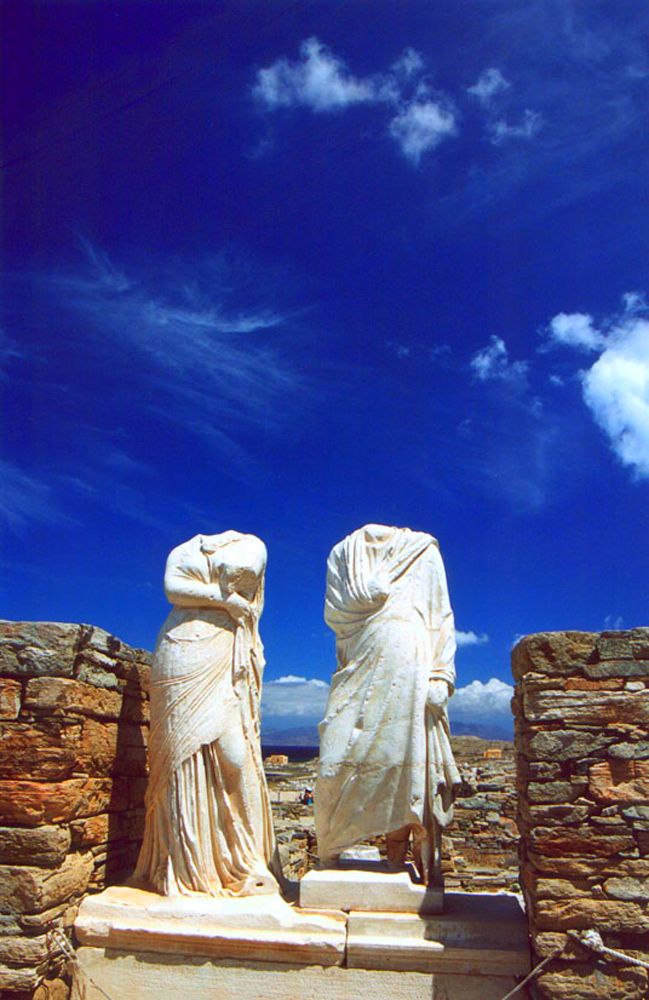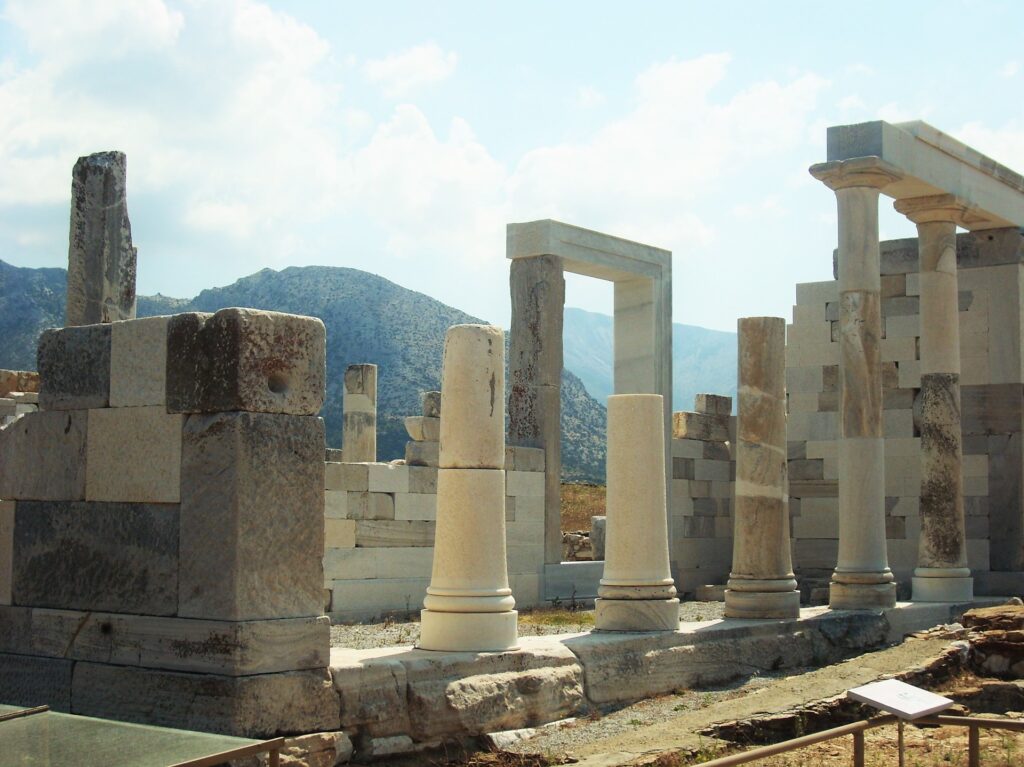Delos – Unique Ancient Sanctuary amidst the Beautiful Cyclades
The island of Delos, is positioned in the centre of the roughly circular ring of islands called the Cyclades, nearest to Mykonos. It is one of the most important mythological and archaeological sites in Greece.

The excavations on this tiny island are among the most extensive in the Mediterranean area; ongoing work takes place under the direction of the French School at Athens and many of the artifacts found are on display at the Archaeological Museum of Delos and the National Archaeological Museum of Athens.
History of a significant holy sanctuary

Delos had a position as a holy sanctuary for a millennium before Olympian Greek mythology made it the birthplace of Apollo and Artemis. Investigation of ancient stone huts found on the island indicate that it has been inhabited since the 3rd millennium BC. By the time of the Odyssey the island was already famous as the birthplace of the twin gods Apollo and Artemis. Indeed between 900 BC and AD 100, sacred Delos was a major cult centre, where Dionysus is also in evidence as well as the Titaness Leto, mother of the above mentioned twin deities. Eventually acquiring Panhellenic religious significance, Delos was initially a religious pilgrimage for the Ionians.

After the Persian Wars the island became the natural meeting-point for the Delian League, which was founded in 478 BC, the congresses being held in the temple. The League’s common treasury was kept here as well until 454 BC when Pericles moved it to Athens.
Sights on Delos
- The small Sacred Lake in its circular bowl, now intentionally left dry by the island’s caretakers to suppress disease spreading bacteria, is a topographical feature that determined the placement of later features.
- The Minoan Fountain was a rectangular public well hewn in the rock, with a central column; it formalized the sacred spring in its present 6th century BC form, reconstructed in 166 BC, according to an inscription.
- There are several market squares. The Hellenistic Agora of the Competaliasts by the Sacred Harbour retains the postholes for market awnings in its stone paving.
- The Temple of the Delians, dedicated to Apollo, is a classic example of the Doric order.
- The Terrace of the Lions also dedicated to Apollo by the people of Naxos shortly before 600 BC, had originally nine to twelve marble guardian lions along the Sacred Way; one is inserted over the main gate to the Venetian Arsenal. The lions create a monumental avenue comparable to Egyptian avenues of sphinxes. Today only seven of the original lions remain.
- The meeting Hall of the Poseidoniasts of Beirut housed an association of merchant, warehousemen, shipowners and innkeepers during the early years of Roman hegemony, late 2nd century BC. To their protective triad of Poseidon, Aphrodite and Asklepios, they added Roma.
- The platform of the Stoivadeion dedicated to Dionysus has a statue of the god of wine and life force. The marble theatre is a rebuilding of an older one, undertaken shortly after 300 BC.
- The Doric Temple of Isis was built on a high over-looking hill at the beginning of the Roman period.
- The Temple of Hera, ca 500 BC, is a rebuilding of an earlier Heraion on the site.
- The House of Dionysos is a luxurious 2nd century private house named for the floor mosaic of Dionysus riding a panther.
- The House of the Dolphins is similarly named from its atrium mosaic, where erotes ride dolphins.
- The Delos Synagogue, the oldest synagogue known today

Athens Tours
TICKETS & THINGS TO DO:












